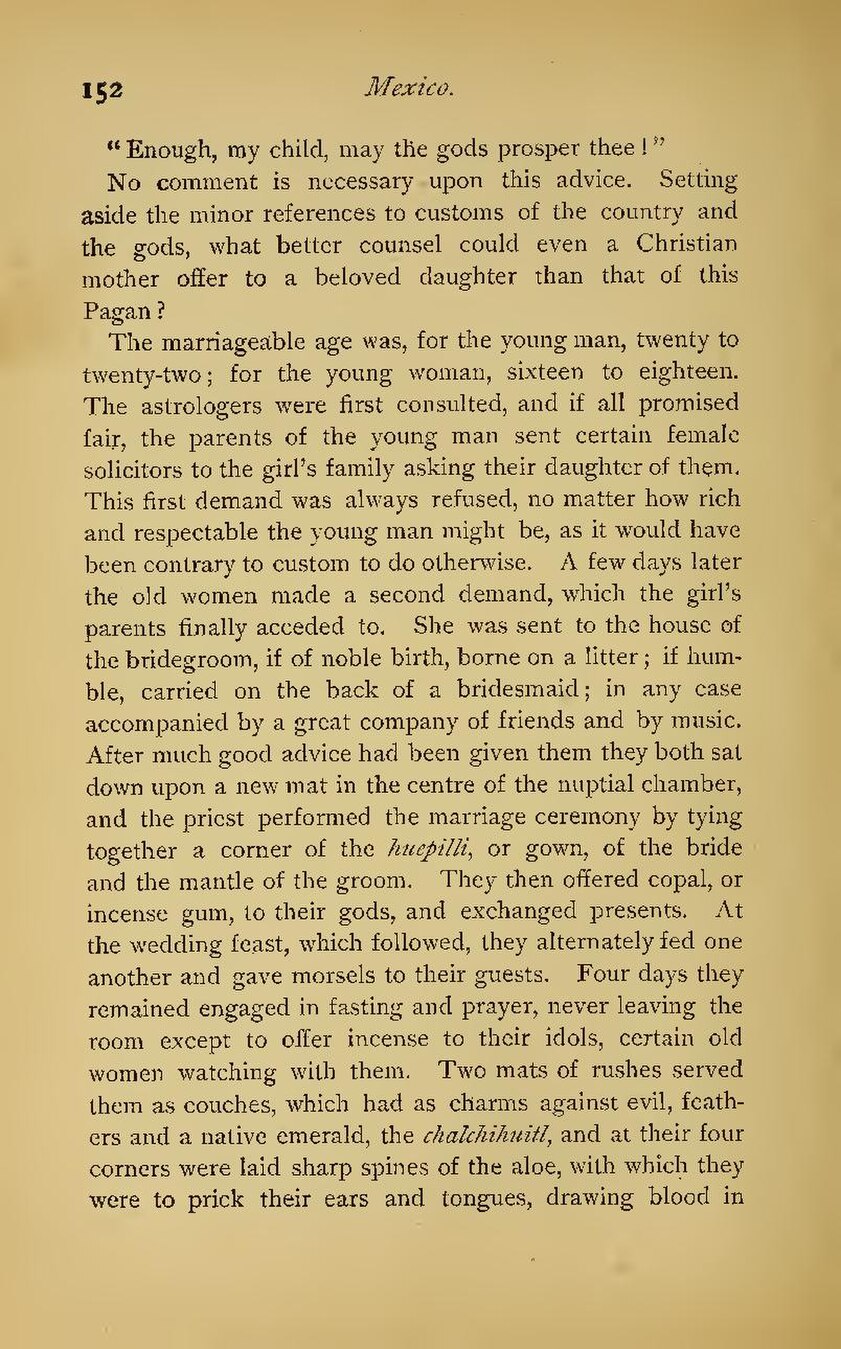"Enough, my child, may the gods prosper thee!"
No comment is necessary upon this advice. Setting aside the minor references to customs of the country and the gods, what better counsel could even a Christian mother offer to a beloved daughter than that of this Pagan?
The marriageable age was, for the young man, twenty to twenty-two; for the young woman, sixteen to eighteen. The astrologers were first consulted, and if all promised fair, the parents of the young man sent certain female solicitors to the girl's family asking their daughter of them. This first demand was always refused, no matter how rich and respectable the young man might be, as it would have been contrary to custom to do otherwise. A few days later the old women made a second demand, which the girl's parents finally acceded to. She was sent to the house of the bridegroom, if of noble birth, borne on a litter; if humble, carried on the back of a bridesmaid; in any case accompanied by a great company of friends and by music. After much good advice had been given them they both sat down upon a new mat in the centre of the nuptial chamber, and the priest performed the marriage ceremony by tying together a corner of the huepilli, or gown, of the bride and the mantle of the groom. They then offered copal, or incense gum, to their gods, and exchanged presents. At the wedding feast, which followed, they alternately fed one another and gave morsels to their guests. Four days they remained engaged in fasting and prayer, never leaving the room except to offer incense to their idols, certain old women watching with them. Two mats of rushes served them as couches, which had as charms against evil, feathers and a native emerald, the chalchihuitl, and at their four corners were laid sharp spines of the aloe, with which they were to prick their ears and tongues, drawing blood in
